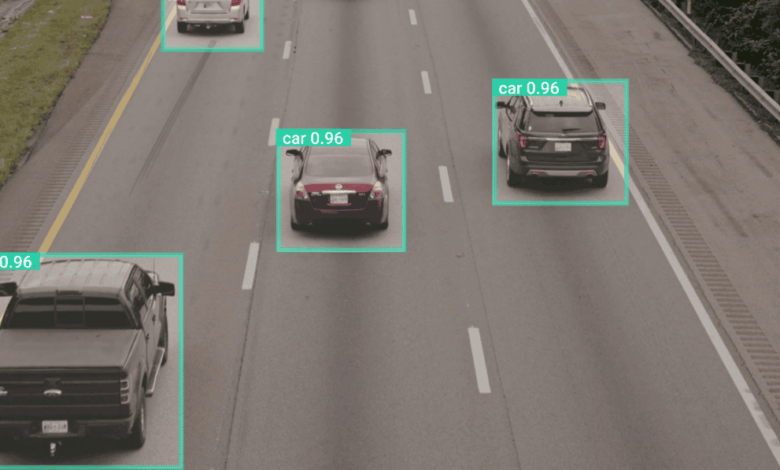How Number Plate Recognition Systems Enhance Security at Checkpoints

In today’s fast-evolving security landscape, checkpoints—whether at borders, airports, or sensitive facilities—play a critical role in safeguarding people and assets. The increasing volume of vehicular traffic combined with sophisticated security threats necessitates the adoption of advanced technologies that can enhance vigilance while maintaining smooth operational flow. One such technology that has become indispensable is the number plate recognition system.
Understanding Number Plate Recognition Systems
A number plate recognition system is an automated technology designed to capture, read, and analyze vehicle license plates using high-resolution cameras and advanced image processing algorithms. By converting visual plate data into digital information, these systems enable real-time vehicle identification and tracking without manual intervention.
Unlike traditional checkpoint procedures that rely heavily on manual inspections and paperwork, number plate recognition offers a non-intrusive, rapid, and highly accurate method to monitor vehicles entering or exiting a secure area. This efficiency makes it ideal for various checkpoint environments ranging from border crossings to parking facilities.
Enhancing Security Through Automated Vehicle Identification
One of the fundamental ways number plate recognition systems enhance checkpoint security is by automating vehicle identification. This automation helps security personnel quickly verify whether a vehicle is authorized to enter the premises or requires further scrutiny.
- Instant Database Matching: Upon reading the license plate, the system cross-references the number against databases of stolen vehicles, flagged individuals, or restricted access lists. Any match triggers immediate alerts, allowing prompt response.
- Reducing Human Error: Manual recording of license plates can be prone to errors, especially during busy hours. Automated recognition eliminates such errors, ensuring reliable and consistent vehicle data.
- Speeding Up Verification: By drastically reducing the time needed to identify vehicles, the system minimizes traffic congestion at checkpoints, improving both security and user experience.
Facilitating Comprehensive Surveillance Integration
Beyond mere identification, modern number plate recognition systems integrate seamlessly with broader surveillance frameworks. When combined with video analytics platforms, they provide holistic monitoring capabilities at checkpoints.
For instance, integrating vehicle data with facial recognition or under-vehicle scanning technologies allows security teams to correlate vehicle movements with occupant identity or inspect for hidden threats. This multi-layered security approach significantly elevates checkpoint vigilance.
Furthermore, coupling these systems with advanced tools such as X-Ray Scanners enhances screening processes. Vehicles flagged by the number plate recognition system can be prioritized for detailed inspection via X-ray technology, ensuring thorough yet efficient checks.
Real-Time Alerts and Incident Response
A major advantage of deploying a number plate recognition system at checkpoints is the ability to generate real-time alerts. These instant notifications can highlight suspicious activities such as attempts to use cloned plates or entry by blacklisted vehicles.
Real-time monitoring allows security personnel to take proactive measures—whether by intercepting a vehicle before it enters the secured zone or alerting law enforcement agencies. This immediate responsiveness is crucial in preventing potential threats and maintaining overall safety.
Optimizing Checkpoint Operations and Traffic Management
Checkpoint security is not only about risk prevention but also about managing vehicle flow efficiently. A well-implemented number plate recognition system automates entry and exit logging, which can streamline operations in multiple ways:
- Access Control Automation: Authorized vehicles can be granted automatic access without the need for physical checks or manual gate operations, reducing wait times.
- Accurate Record-Keeping: Maintaining digital logs of all vehicles passing through aids in audits, investigations, and compliance with regulatory requirements.
- Data-Driven Insights: Analyzing vehicle traffic patterns can help optimize staffing, adjust checkpoint layouts, and improve overall throughput.
Overcoming Challenges in Checkpoint Environments
Despite their advantages, deploying number plate recognition systems at checkpoints involves addressing certain challenges:
- Environmental Conditions: Factors like poor lighting, weather variations, or dirty plates can affect recognition accuracy. Advanced image processing and infrared cameras help mitigate these issues.
- Diverse Plate Formats: Variations in license plate designs, fonts, and sizes across regions require adaptable algorithms trained on extensive datasets.
- Data Privacy and Security: Handling sensitive vehicle and driver data demands robust encryption, strict access controls, and compliance with privacy regulations to protect individuals’ rights.
Addressing these challenges ensures that the system operates reliably and ethically, maintaining stakeholder trust.
Future Trends and Innovations
The future of checkpoint security will see even greater sophistication in number plate recognition systems. With advancements in artificial intelligence and machine learning, these platforms are evolving to recognize plates from multiple countries in real time, adapt to new plate designs dynamically, and integrate with other biometric systems for enhanced verification.
Additionally, emerging applications include predictive analytics to anticipate traffic surges or security risks, and cloud-based platforms enabling centralized monitoring across multiple checkpoints.
Conclusion
Number plate recognition systems have revolutionized security protocols at checkpoints by combining speed, accuracy, and automation. Their ability to identify and verify vehicles instantly not only strengthens security but also optimizes operational efficiency. When integrated into broader security frameworks—such as airport security with AI-based X-ray scanners and advanced video analytics—they form a robust, multilayered defense mechanism capable of addressing today’s complex and evolving threats.
As global mobility and security demands continue to grow, leveraging intelligent vehicle identification systems will remain a cornerstone for safe, streamlined, and future-ready checkpoint management.





